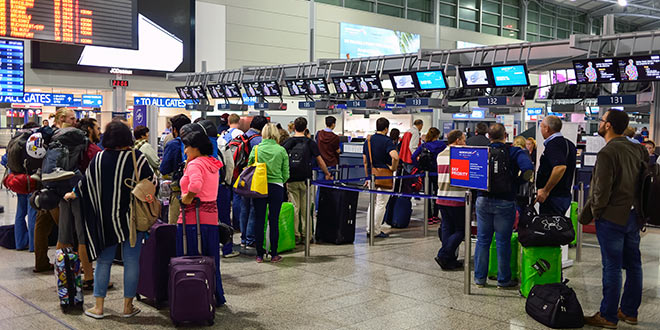Overcrowded short-term parking spaces where passengers have to wait for an exit or hardly find a parking space, a long check-in time for some check-in counters, a lengthy wait for luggage on arrival, and often waiting for a junkyard before the plane can get a pass. Such are the frequent experiences of passengers in some demanding times at Prague Airport.
Prague Airport has been growing for eight years in a row. This year, the management of the airport expects an increase of almost 1.4 million over the record 15.4 million last year. It predicts a doubling of the total number of checked-in passengers within 20 years. The airport plans to expand capacity due to interest in flying. There will also be new parking spaces.
What will happen at Václav Havel Airport
In addition to classical construction investments – such as new parking spaces or upgrading of the runway system – the airport wants to use modern technology to make it easier to operate without new costs. “An example is the need for self-service, where instead of massive increases in the number of check-in counters, we will use modern solutions, such as Bag Drops for luggage clearance. If there is enough interest from the airlines, the first one will appear at our airport in 2019, “said Václav Řehoř, Chairman of the Václav Havel Airport Prague.
Prague Airport has transported a record 15.4 million passengers last year
Thanks to Bag Drops, passengers can weight and check in their luggage on their own, instead of waiting in a queue. The device will automatically check their luggage after they have loaded the ticket, and then the checked baggage will go to the security check and the aircraft.
The classic check-in counters should also be expanded. At the first terminal, which is intended for flights outside the European Union’s visa-free area, the airport plans to increase the number of these counters by ten to 72. A more massive investment is waiting for a second terminal, which should create a new apron island to increase the number of check-in counters by 24 to total of 84.
The track system must also adapt to the expected increase. The airport is currently building so-called “fast-paces” that let planes leave the ranks earlier. Take-off and landing aircrafts will accelerated by two to 50 flights per hour. An additional increase in passenger numbers is planned by the airport to obtain a more efficient division of flight times. It therefore wants to motivate airlines to use off-peak times.
More people in all directions
Passengers will feel accelerated even when arriving in Prague. It would help to make the carousels for luggage with more capacity. The refurbishment of luggage compartments for an estimated 1.3 billion crowns also improves baggage handling. Part of the baggage sorting facility will include eight of the modern devices detecting explosives in the luggage.
An important change in the years to come will be the way people get to Prague airport. Even before the rail link to the city center is needed, the airport needs to shorten the intervals between individual buses that passengers take to the city center.
Currently, mass transport is used by 40 percent of passengers and this group is expected to grow in the coming years. To help overcome the onslaught, the aforementioned stops, which the airport prepares in cooperation with Ropid, and which will accelerate the advent of the buses, should help.
Part of the project is to build new ticket vending machines so that passengers do not have to buy tickets at the driver’s desk. The Prague Airport spokesman is still discussing the concrete form of the stops.
Even for passengers with their own cars, the airport prepares more comfortable parking by building a pair of new parking spaces in the future. These should be in use at Prague Airport within five years.
The first one should be located near the current PA Smart parking lot and the other should be built on the site of the PB Economy’s outdoor parking lot. This year, the airport is set to build 600 parking spaces at the former seat of Czech Airlines, the APC.

